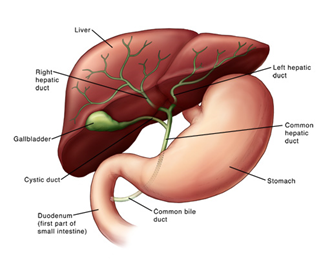Primary Sclerosing Cholangitis Treatment
Once a diagnosis of primary sclerosing cholangitis (PCS) is confirmed, you can begin treatment. There are a number of different treatment options for PCS, and your doctor will discuss with you the best course of treatment.
Treatment options include:
- Medication
- Endoscopic therapy
- Percutaneous therapy
- Surgery
PSC Treatment: Medication
There is no medication proven to be effective in the treatment of PSC. However, ursodeoxycholic acid is a treatment that improves abnormal biochemical tests. It works by increasing the bile flow as well as preventing damage to liver cells, but it does not appear to affect survival or the need for liver transplantation. In addition, studies have shown that it may be harmful in high dosages.
PSC Treatment: Endoscopic Therapy
Endoscopic therapy is used to dilate the strictures in order to increase bile flow. This improves jaundice and decreases the number of episodes of cholangitis. Doctors at The Johns Hopkins Hospital have decades of experience using aggressive endoscopic therapy in patients who have strictures but not cirrhosis. They may perform a procedure called balloon dilation to improve flow through the biliary tree.
Endoscopic therapy is the widely accepted option because it is relatively noninvasive and can be repeated as necessary. It may prolong transplant-free survival, and can also significantly improve the quality of life for patients awaiting transplantation.
PSC Treatment: Percutaneous Therapy
Like endoscopic therapy, percutaneous therapy dilates the biliary tree and improves bile flow. Percutaneous therapy may be used in conjunction with an endoscopic or surgical approach. Just like an endoscopic procedure, your doctor will dilate a balloon in the ducts. However, instead of accessing the ducts using an endoscopic approach, your doctor will need to puncture the skin to reach the area. It is a more invasive approach than the endoscopic procedure and may cause some discomfort.
PSC Treatment: Surgery
Non-transplant surgery
Surgery is performed to improve bile flow, reduce jaundice and prevent further episodes of cholangitis. Non-transplant surgical approaches include resecting the part of the hepatic bile duct that is outside the liver, called the extrahepatic bile ducts. Your doctor may decide to permanently stent the bile ducts. A stent is a small tube that drains the bile ducts.
In general, non-transplant surgical approaches may make liver transplantation more difficult.
Transplant Surgery
Liver transplantation is the best course of treatment for patients with end-stage liver disease. During liver transplantation, the diseased liver portion is removed and replaced with a healthy one. It is a long and complex surgery, and you need to take medications for the rest of your life to prevent your body from rejecting the organ.
Your doctor will discuss with you whether you are a candidate for liver transplantation and what you need to do in order to be placed on the waiting list. Learn more about liver transplantation.






